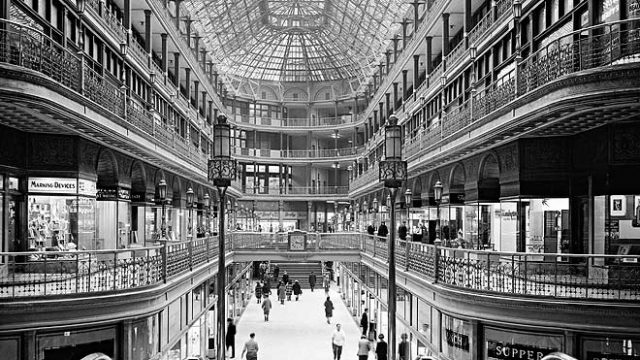You could say that shopping arcades have always existed, in one form or the other. From Trajan’s Market in ancient Rome to the 15th century Grand Bazaar of Istanbul, purpose-built areas reserved for shopping have always been an important aspect of cultures. Although the modern shopping arcades could be said to have begun with St Petersburg’s 18th century Gostiny Dvor and London’s Burlington Arcade, the first and finest example of the modern mall was Milan’s grand Galleria Vittorio Emanuele II. Built in 1870, this four-storied grand arcade was a first in terms of size and spaciousness. Its two glass-vaulted arcades cover the street that connects the Duomo with the Teatro alla Scala. Among notable architectural flourishes is its giant glass dome. The Galleria introduced a new idiom, and it was swiftly copied elsewhere. Its most successful heir was the Cleveland Arcade. One of America’s first shopping arcades, it was built soon after the Galleria, in 1890. Here, a five-story arcade joins two nine-story buildings, overtopped by a glass skylight. It is considered a classic of Victorian design. Modern malls and arcades are essentially variations on the theme and standard established by the Galleria Vittorio Emanuelle II and the Cleveland Arcade.
Cleveland Arcade, 1890
One of America--s first shopping arcades, the Cleveland Arcade, drew inspiration from Milan--s grand Galleria Vittorio Emanuele II

Cleveland Arcade, 1890
Cleveland Arcade, 1890



